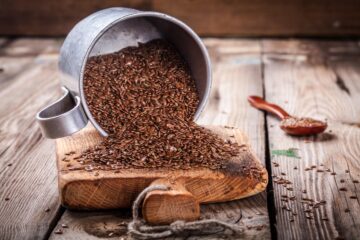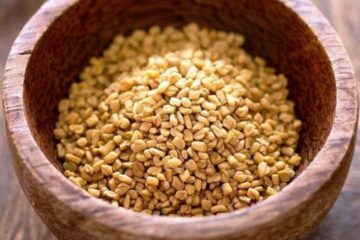Name:
Description:
Garlic is a bulbous plant that typically grows about 60 cm tall. It has long, flat, pointed leaves that are much like those of the lily, and a stem that rises directly from the bulb and produces a terminal inflorescence. The bulb, which is the part of the plant most commonly consumed, consists of individual cloves enclosed in a white papery skin.
Medicinal Uses of Garlic:
- Cardiovascular Health: Garlic is known for its cardiovascular benefits. Clinical trials have shown that it can lower cholesterol and blood pressure, potentially reducing the risk of heart disease. A 2013 study conducted by the National Institutes of Health found that garlic extract supplementation improved both systolic and diastolic blood pressure in hypertensive patients. (source: “Effect of garlic on blood pressure: A meta-analysis”, Ried K, Frank OR, Stocks NP. Journal of Hypertension, 2013).
- A 2016 meta-analysis suggested that garlic preparations were associated with a reduction in total cholesterol levels, particularly in individuals with elevated levels. The researchers concluded that garlic could play a beneficial role in preventing and treating hypercholesterolemia. (source: “Effect of garlic on serum lipids: an updated meta-analysis”, Reinhart KM, Coleman CI, Teevan C, Vachhani P, White CM. Nutrition Reviews, 2016)
- Antimicrobial Properties: Garlic has long been recognized for its antimicrobial properties. It contains a compound called allicin which has been found to be effective against a broad range of bacteria, including E. coli and staphylococcus aureus, as well as fungi, viruses, and parasites. A 2014 study published in the Journal of Antimicrobial Chemotherapy found that a compound derived from garlic was 100 times more effective than two popular antibiotics at fighting the Campylobacter bacterium, one of the most common causes of intestinal illness. (source: “Antimicrobial activity of allicin: chemistry and biological properties”, Cutler RR, Wilson P. Journal of Antimicrobial Chemotherapy, 2004).
- Cancer Prevention: There is also some evidence that garlic may have cancer-preventive properties. According to the National Cancer Institute, several population studies show a link between increased intake of garlic and reduced risk of certain types of cancer, including stomach, colon, esophagus, pancreas, and breast. This might be due to garlic’s antioxidant properties, its ability to enhance DNA repair, and its ability to induce cell death. (source: “Garlic and Cancer Prevention”, National Cancer Institute).
- Immune System Support: Garlic is also known for its immune-boosting properties. A study conducted by the University of Florida found that participants who took a garlic supplement reported fewer colds compared to those who took a placebo. When they did get a cold, the duration of illness was shorter – an average of 4.5 days compared to 5.5 days for the placebo group. (source: “Preventing the Common Cold With a Garlic Supplement: A Double-Blind, Placebo-Controlled Survey”, Josling P. Advances in Therapy, 2001).
- Antioxidant Properties: Garlic contains antioxidants that protect against cell damage and aging. This is mainly due to the presence of a sulfur-containing compound called allicin, as well as other enzymes and compounds. A study published in Food and Chemical Toxicology suggested that aged garlic extract has potential as a powerful antioxidant. These antioxidant properties might help prevent diseases like Alzheimer’s and dementia (source: “Aged garlic extract and S-allyl cysteine prevent formation of advanced glycation endproducts”, Ahmed N. Food and Chemical Toxicology, 2007)
- Bone Health: There is evidence that garlic could have benefits for bone health. In a study published in the Journal of Phytotherapy Research, it was suggested that garlic could minimize bone loss by increasing estrogen in females, making it a beneficial natural supplement for osteoporosis and arthritis. (source: “Garlic supplementation prevents oxidative DNA damage in essential hypertension”, Dhawan V, Jain S. Phytotherapy Research, 2005).
- Detoxification: Garlic has also been suggested to aid detoxification. It contains compounds that help the liver to rid the body of toxins. A study conducted by the National Institutes of Health suggested that garlic extract may be a useful therapeutic agent for the treatment of toxicities derived from heavy metals. (source: “Protection against oxidative damage and cell death by a novel garlic sulfur compound, Diallyl trisulfide”, Xiao J, Liong EC, Ling MT, Ching YP, Fung ML, Tipoe GL. Food and Chemical Toxicology, 2008).
Origin and Distribution:
Garlic is believed to have originated in Central Asia and northeastern Iran. However, it is now grown and used globally, with China being the largest producer of garlic worldwide.
Cultivation and Care:
Garlic prefers a sunny location and soil that is well-drained. It can be planted in the fall or the spring, although fall plantings typically yield a larger harvest. Garlic does well in a variety of soil types, but thrives best in rich, well-drained soil. Regular watering is necessary, but overwatering can lead to disease and rot.
Harvesting and Storage:
Garlic bulbs are typically ready for harvest in the summer or fall, when the lower leaves start to brown. The bulbs should be carefully lifted from the soil to prevent bruising. For storage, garlic bulbs should be cured, or allowed to dry, in a well-ventilated area for a few weeks before storing in a cool, dry location.
Uses:
Culinary Uses: Garlic is a fundamental component in many dishes around the world. It provides a strong, distinctive taste to foods and is used in forms such as raw, cooked, roasted, and as a powder.
Medicinal Uses: Garlic has been used traditionally for health purposes by cultures across the globe. Modern science confirms its beneficial properties for cardiovascular health, including reducing blood pressure and cholesterol levels, as well as antimicrobial effects. (National Center for Complementary and Integrative Health, National Institutes of Health).
Other Uses: Garlic has been used as a natural pest deterrent in gardening and in some folk traditions, it is considered to ward off evil spirits.
Safety Information:
Garlic is generally safe for most people in the amounts typically used in cooking. However, excessive consumption can cause digestive upset. Garlic supplements should be used with caution, as they can interfere with certain medications, including blood thinners. Individuals scheduled for surgery are also often advised to stop consuming garlic supplements due to their potential to increase bleeding risk.
Historical and Cultural Significance:
Garlic has been cultivated for thousands of years and was known to ancient Egyptians, Greeks, Romans, and Chinese. It has been used not just as a food and medicine, but also as a currency, a performance enhancer for athletes, and in various cultural and religious traditions.




